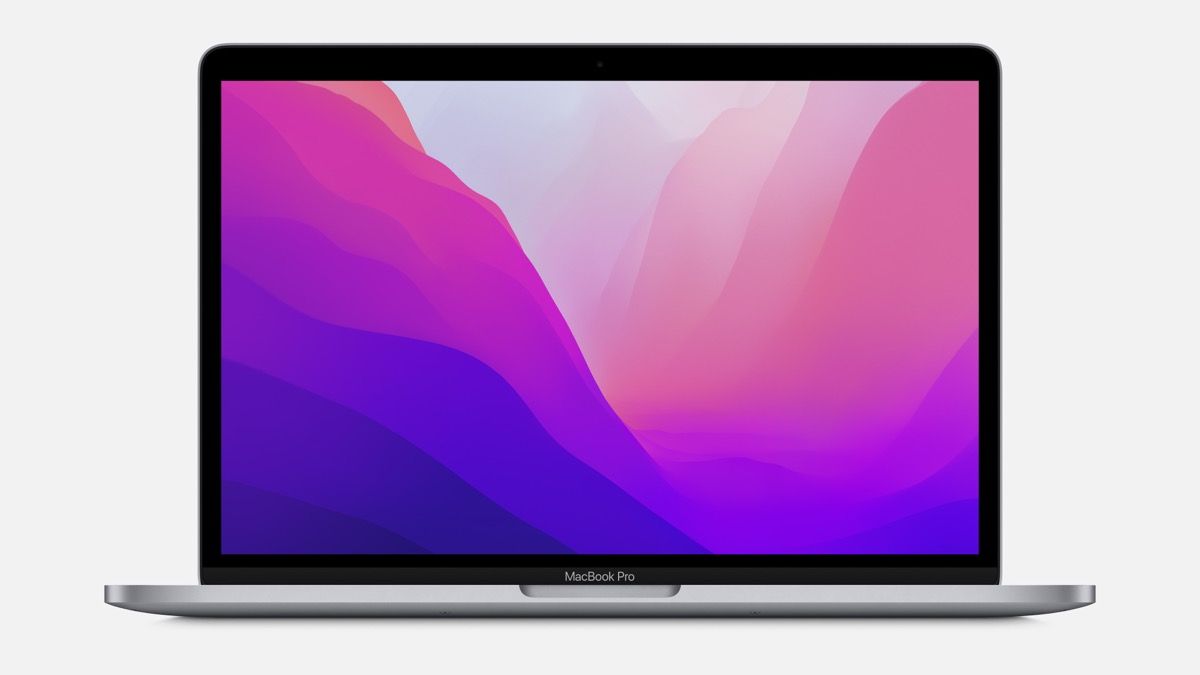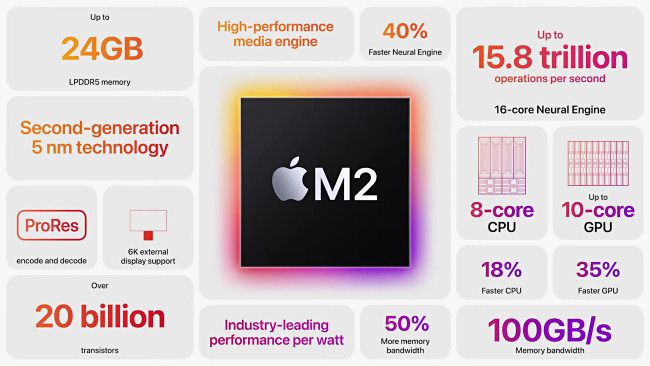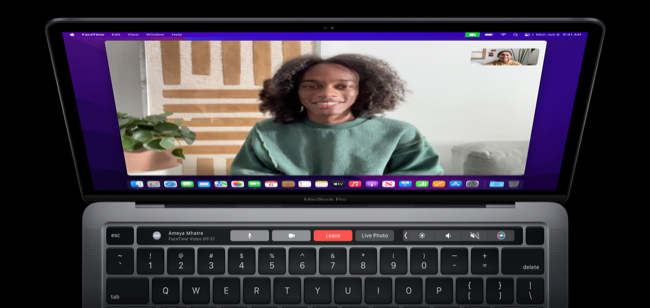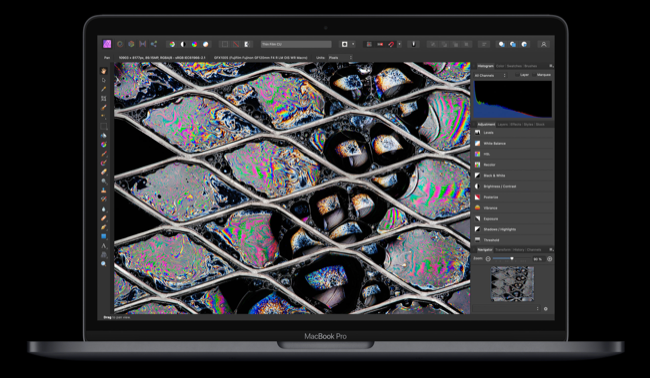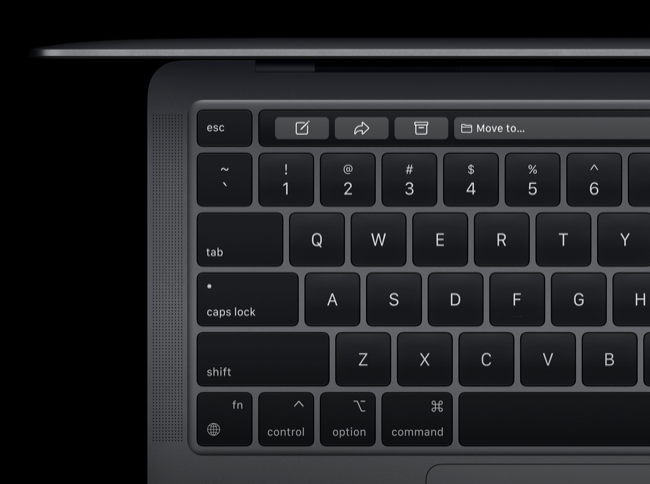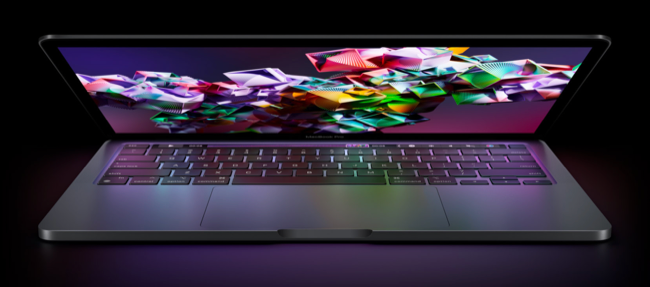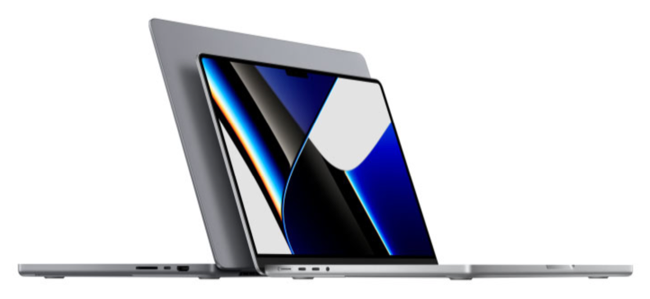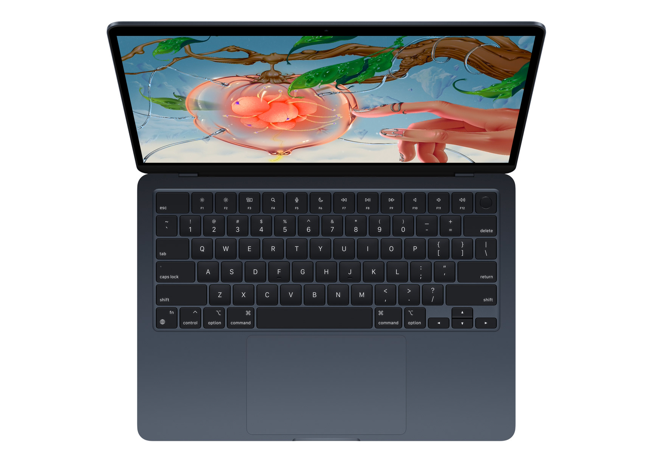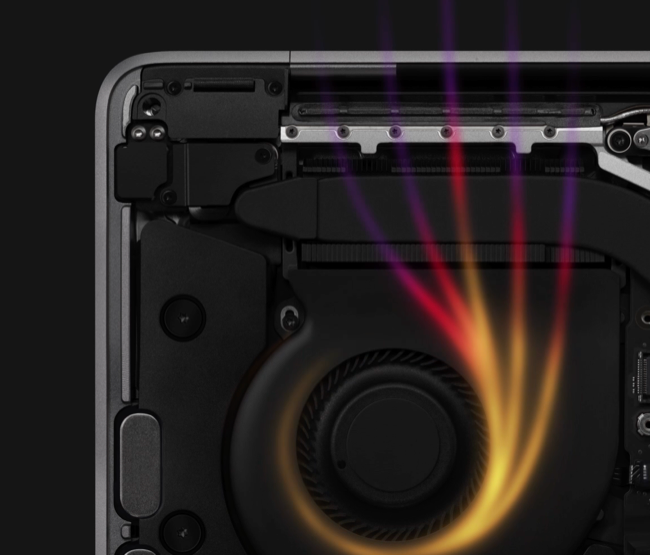Quick Links
The M2 MacBook Pro might just be the odd one out in Apple's notebook line-up, but that doesn't mean you should write it off completely. If you're fond of the 13-inch form factor or Apple's previous design choices, the M2 upgrade might just be worth your time.
The New M2 Chip
The main thing Apple has changed in this revision is the brains of the operation. Gone is the first-generation M1 chip in favor of the higher-end M2 with an 8-core CPU and 10-core GPU. While the CPU core count remains unchanged, the GPU gets an extra two cores on last year's model which should help things move a little more swiftly in graphically-intensive applications.
Apple is promising a 1.4x improvement in video editing and 1.2x faster photo editing operations compared to the M1 chip. This is a far cry from the huge performance leaps (around 4x) we saw when Apple first introduced its new chips in 2020, but it's still a welcome step in the right direction (especially considering both chips use the same 5nm architecture).
In addition to an improved GPU core count, the M2 features a dedicated media engine with hardware-accelerated playback for H.264, HEVC, ProRes, and ProRes RAW. The chip also features video decode and encode engines, and a dedicated ProRes encode and decode engine for professionals who shoot in that format. It's a great leap forward for anyone who uses their MacBook for video editing.
As part of the improved M2 chip, Apple now offers up to 24GB of RAM as an option at checkout which should help in memory-intensive tasks like editing huge RAW photo files or mastering audio projects with lots of channels and plugins. The storage options remain the same, with 256GB available in the base model and up to 2TB selectable at checkout.
The Last MacBook With a Touch Bar?
One reason you might want to opt for the 13-inch MacBook Pro is the lingering Touch Bar, which is absent on Apple's redesigned 14 and 16-inch models. The decision to drop physical function keys in favor of a context-aware OLED strip that spans the top row of the keyboard proved divisive, but fans of the feature can count their lucky stars.
This really might be your last chance to grab a MacBook Pro with a Touch Bar, since the revised machines ditch the feature completely. Grabbing the 2022 revision ensures you've got an ARM-based Mac that will continue to be supported into the future. Of course, there are some compelling reasons to opt for the 14-inch model instead but we'll get to those later.
Look Ma, No Notch!
The display on the M2 MacBook Pro is identical to that used on the previous model, which is to say an IPS panel that falls short of Apple's "Liquid Retina" branding. It hits 500 nits of brightness which is plenty to see what you're doing in most light conditions. Like all modern Macs with a display, it supports P3 wide color, True Tone, and is "Retina" quality so distinguishing individual pixels is difficult under normal use.
While the display falls short of the dizzy heights set by the 14 and 16-inch 2021 MacBook Pro models, there's no notch to speak of. If you hate Apple's decision to place the webcam module in a rectangular cutout (even though it's not a big deal and you can hide it) then the 13-inch MacBook Pro is the only Apple portable with an M2 chip that lacks a notch.
Not even the new MacBook Air gets away without the notch treatment.
M2 Models Get Spatial Audio
Aside from the M2, Apple only made two other real changes to the 2022 13-inch MacBook Pro, with one adding support for Spatial Audio on the built-in speakers. This is largely virtualized and won't sound as good as listening to Dolby Atmos over headphones with head-tracking (like the AirPods Pro).
The other change allows the MacBook Pro to drive high-impedance headphones using the built-in 3.5mm stereo output.
Everything Else Remains the Same
It's easier to list the changes Apple made to the 2022 revision than the similarities since practically everything else remains the same. This includes the chassis and overall design of the MacBook Pro, storage configurations, display, the weight of the device, the webcam used (still 720p unfortunately), and the Magic Keyboard.
There are still only two Thunderbolt/USB 4 ports, one of which must be used to charge the device (no MagSafe either, I'm afraid). Lastly, the battery life is still unchanged with a quoted 17 hours of "wireless web" light usage in a power-efficient browser like Safari.
What About the M1 Pro and M1 Max Models?
If you want more power from your MacBook Pro, you should consider the 14 and 16-inch 2021 models instead. These start at $1,999 and $2,499 respectively, while the M2 MacBook Pro is a budget option at $1,299.
If you're weighing up the 13-inch model, a 14-inch MacBook Pro might make the most sense if you're looking for an upgrade. In addition to the M1 Pro and M1 Max chip options which provide 10-core CPU and up to 32-core GPU performance, you'll get more options when it comes to RAM (up to 64GB) and storage (up to 8TB) if you're happy to open your wallet.
There are other improvements too, including a superior display with up to 1600 nits of brightness in HDR content, ProMotion 120Hz refresh rates, better color rendition, and more usable area (though you'll have to contend with the notch). These machines use a new form factor that feels a little bulkier and utilitarian but one that suits the notion of a portable workstation that can chew through most tasks you throw at it.
Other improvements in the 2021 M1 Pro and M1 Max models include slightly better battery life, MagSafe 3, fast charging (though not all 14-inch models come with a fast-charge capable charger), a six-speaker sound system, an HDMI port, and SDXC memory card slot.
You'll lose the Touch Bar, but you'll get a row of physical function keys back. Touch ID is still here too, so you can quickly authorize payments and log in with a swipe of your finger.
M2 MacBook Pro or M2 MacBook Air?
Perhaps a more fitting comparison point is the M2 MacBook Air, which has received a completely overhauled design that not only looks great but includes features like MagSafe, a Liquid Retina (read: slightly nicer) display, smaller size, lighter weight, a better webcam, and more color options (including a stunning dark "Midnight" finish).
There are drawbacks of course. The MacBook Air is passively cooled, which means there's no fan inside. One of the main points of difference between the original M1 MacBook Pro and MacBook Air models was the inclusion of a fan in the Pro. This allows the laptop to sustain a higher load for longer before thermal throttling sets in. If you want a more performant machine, the MacBook Pro can handle higher CPU and GPU loads for longer before performance is limited to protect the silicon.
The MacBook Air also comes with a slightly weaker 8-core GPU setup in its base configuration, which is only $100 cheaper than the MacBook Pro M2. You'll get slightly worse battery life, no Touch Bar (but a full row of physical function keys), and a notch (but slightly larger display) too.
Choose between them based on what's most important to you: passive or active cooling, physical keys or Touch Bar, MagSafe or USB-C charging, and whether a weaker GPU and less battery life is worth the trade-off for an arguably more modern-feeling design.
A Good Time to Buy a Mac
You can't buy the older M1 model in most territories since the 13-inch Macbook Pro with M2 went up for pre-order, but the M1 MacBook Air is still available as a $999 budget option. Whatever you opt for, it's a good time to be a Mac user since the performance gains made in the switch over to Apple Silicon have had a hugely positive effect on the macOS experience.
If you need more power, you should probably look to the M1 Max processor in the higher-end 2021 MacBook Pro or opt for a desktop Mac in the form of a Mac Studio, the most powerful desktop computer Apple has ever made.

